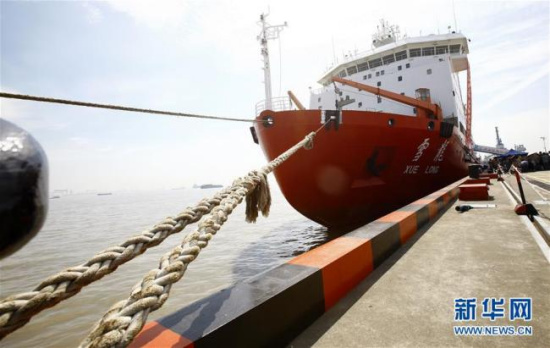
China's ice breaker, the Xuelong (Photo/Xinhua)
China will continue to actively engage in research and shipping in the Arctic region, according to the State Oceanic Administration (SOA).
Lin Shanqing, deputy director of the SOA, said Thursday China will continue to encourage its businesses to actively take part in infrastructure construction in the Arctic shipping routes and steadily promote their commercial use and regular operation.
"The use of the Arctic shipping routes is significant to China both due to its geographic proximity and China's heavy dependence on maritime transport as a major trade economy," said Lin.
China's ice breaker, Xuelong, which means "Snow Dragon," navigated through the Central Route of the Arctic last week, becoming the first Chinese ship to successfully pass through the passage.
The 2,500-nautical-mile Central Route passes through waters near the Arctic Pole. It is the shortest maritime trade passage connecting northeast Asia with Europe. More vessels with ice-breaking capabilities are expected to navigate through the route by 2020 as sea ice further melts.
Lin said Xuelong's expedition was a key move to manifest pledges on cooperation in Arctic affairs made by China and Russia this year and proposals raised within the Belt and Road Initiative.
"It also shows China actively honors its international obligations as an observer state of the Arctic Council," he said, adding that the move was also significant in promoting international efforts to combat climate change and ocean acidification in the Arctic region.
Currently, China's activities in the Arctic are limited, but on the rise. In 2013, Cosco Shipping Co. completed the first commercial use of the Arctic Northeast Passage by a Chinese company.
Xuelong, which was put into use in 1994, was primarily designed to transport supplies to China's research stations. It can break ice up to 1.2 meters thick.


















































